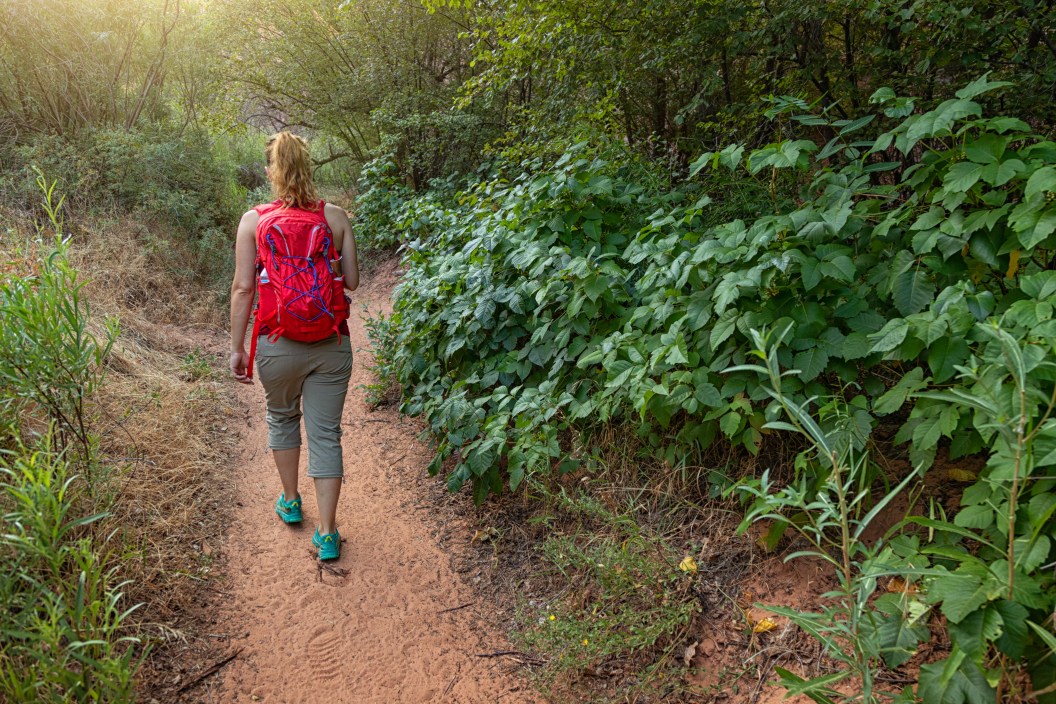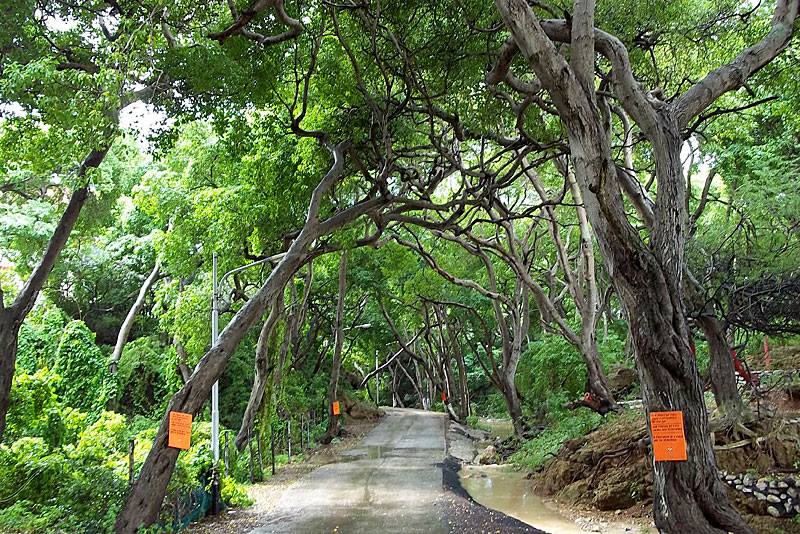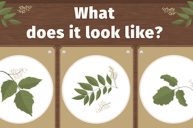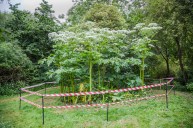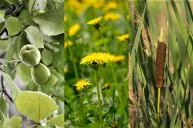Most people who love the outdoors are keenly aware of the dangers posed by animals or the elements. But plants, while generally considered harmless decorations of the natural world or edibles you can forage for, are often overlooked as a source of danger.
Whether you're going out for a hike, an early-season deer hunt, or are actually in a survival situation, it's important to have a working knowledge of all potential risks in an area, from wildlife to poisonous plants.
Run-ins with poisonous plants can cause everything from rashes to upset stomachs to death, if ingested in large enough quantities. And it's not just you who could be in danger; many plants are also toxic to your pooch.
With that in mind, we've compiled a list of eight dangerous North American plants that outdoorsmen and women will definitely want to avoid. The list starts with the most benign plants, that are simply irritating, and progresses to plants that are downright deadly.
1. Poison Ivy
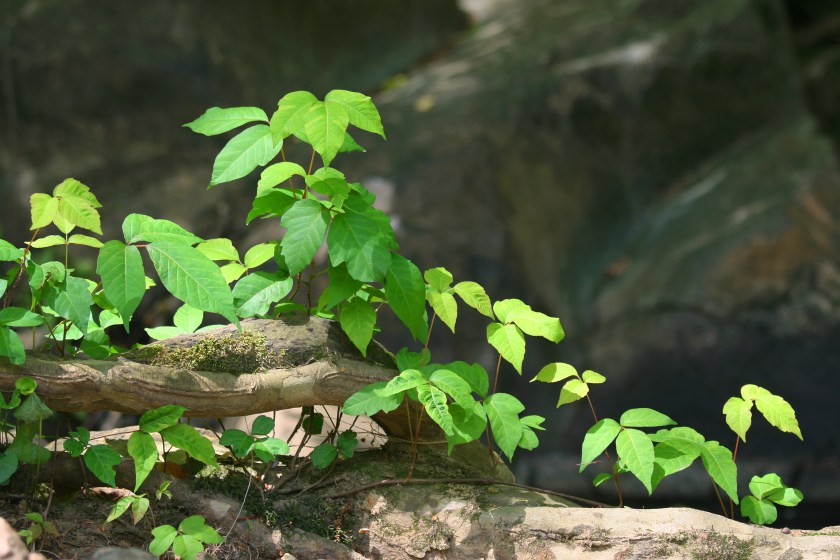
Getty Images, email2ying
It's hard to love the outdoors and avoid running into poison ivy at some point, as it's probably the most common poisonous plant you're likely to encounter. Found throughout the United States (except Alaska and Hawaii), it makes its home in forests, fields, road sides, parks, and wetlands. The adage of "leaves of three, let it be" is an often-heard refrain that refers to poison ivy's distinctive, alternate leaves with three leaflets.
Fortunately, poison ivy generally just causes an annoying rash. There is an oily resin called urushiol in the leaves, stems, and roots that many people are allergic to. The resulting rash is incredibly itchy and characterized by bumps and rashes. Over-the-counter cortisone cream, calamine lotion, and oral antihistamines—as well as some natural remedies—are generally enough to kick the rash in a week. It the rash is somewhere sensitive—such as your face, hands, or mouth—you should seek medical attention.
READ MORE: 3 Poisonous Plants That Rival Poison Ivy
2. Poison Oak
There are two different kinds of poison oak you'll want to watch out for: toxicodendron pubescens (Atlantic poison oak) and toxicodendron diversilobum (Pacific poison oak). As evidenced by the names, poison oak grows along the West Coast and the southeastern United States.
Despite the oak name, poison oak isn't related to oak trees at all, and the plants are actually shrubs that grow around 3 feet tall. They normally have green leaves of three, though these leaves often change color much like a tree in the fall months.
Poison oak contain urushiol in its sap and leaves, just like poison ivy, and the resulting rash is similar.
3. Poison Sumac
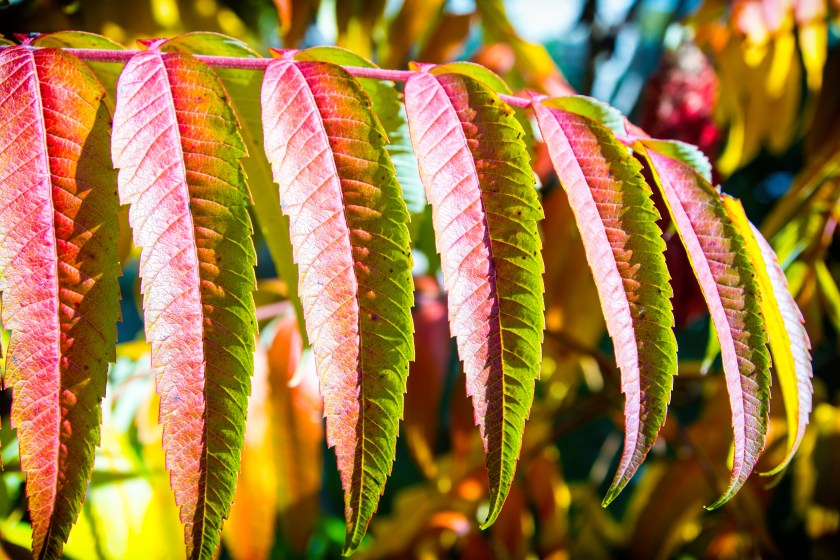
Getty Images, Gregory_DUBUS
Poison sumac is another shrub-type plant, but it can grow upward of 30 feet high and is only found in the eastern United States. As with poison ivy and poison oak, you want to avoid all skin contact with poison sumac. Unfortunately, poison sumac is a little harder to spot because the "leaves of three" rule doesn't apply. It grows 9-13 leaves per stem.
Out of these three urushiol-containing plants, some say the worst one to get is poison sumac because it's slightly more toxic than the other two. (We'll take their word on that, as we're in no hurry to put that theory to the test.)
We should also mention you really don't want to be close to poison ivy, sumac or oak while it's burning. Inhaling the smoke could expose the toxins to your lungs and cause breathing difficulties. If you're ever in a survival situation, remember to be wary of the white berries of poison sumac. If you think the itching is bad, eating it can be worse, and the berries have been known to be fatal.
4. Water Hemlock
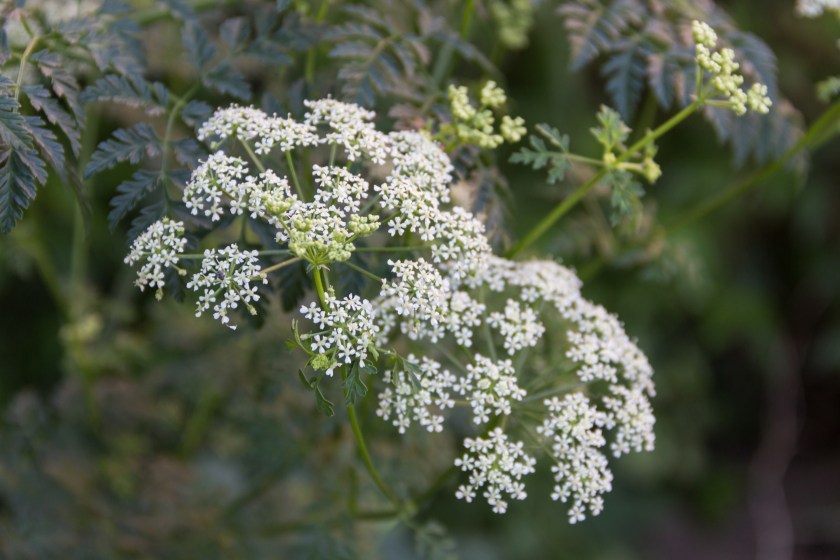
Getty Images, gabrielabertolini
Water hemlock is one plant you really don't want to eat under any circumstances, due to a poison called cicutoxin, a highly poisonous unsaturated alcohol that has a carrot-like odor.
Cicutoxin can cause all sorts of adverse effects in humans, including severe seizures, comas, abdominal pain, nausea, vomiting and worse. In large amounts, it can be fatal.
Water hemlock, which grows throughout the western United States, is often confused with edible plants such as wild parsnips, celery, and carrots. In the case of the parsnips, water hemlock not only looks similar, it's often found in the same areas as parsnips. Keep in mind, wild parsnips have yellow flowers, while water hemlock has white flowers. The root of the wild parsnip is edible, but the sap is toxic and should be avoided. Before doing any kind of foraging for edible wild plants, it is very important to know exactly what you're eating.
There have also been some cases of water hemlock poisoning people simply through skin contact, and we recommend avoiding it at all costs.
5. Poison Hemlock
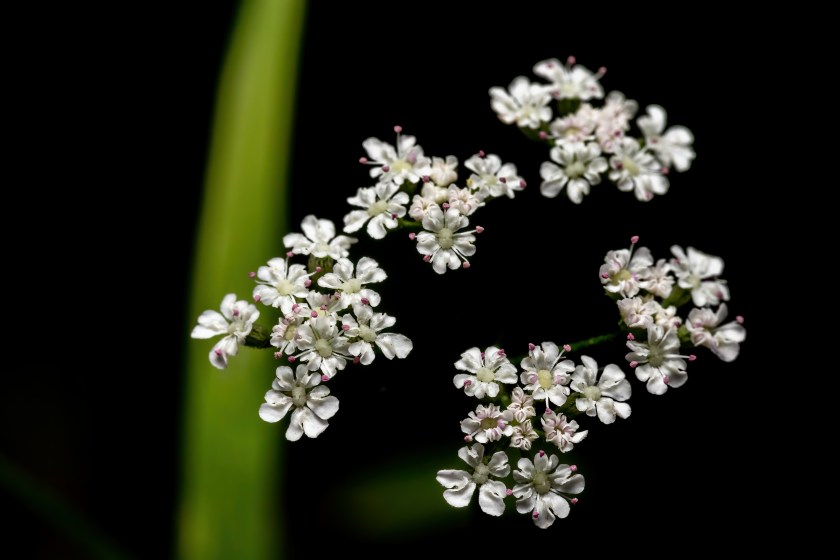
Getty Images, Brezina
Another dangerous hemlock, poison hemlock is well known as the plant that was used to kill the Greek philosopher Socrates. If you don't want to sign your own death warrant, make sure you can positively identify, and avoid, poison hemlock while foraging.
Poison hemlock grows 5-8 feet tall and is often topped with white flowers much like the water hemlock. Be careful, though, because this plant can also be easily mistaken for the edible Queen Anne's lace, aka wild carrots.
Poison hemlock contains several alkaloid toxins, all of which are bad news for humans. Ingesting poison hemlock can have negative effects on your central nervous system, causing trembling and salivating. In worst-case scenarios, poison hemlock could cause your respiratory system and kidneys to fail, and kill you.
6. Deadly Nightshade
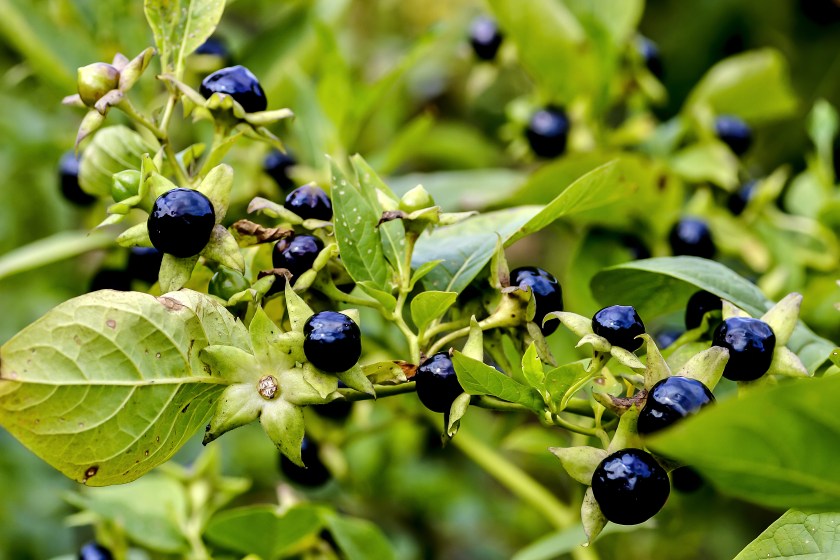
Getty Images, Werner Meidinger
Deadly nightshade, also known as belladonna, is a beautiful perennial that grows to be around 6 feet tall and is characterized by purple and green bell-shaped flowers and shiny black berries. While it's safe to admire the flowers from afar, the berries, leaves, and roots are poisonous.
Belladonna is one of the most toxic plants known, thanks to the toxic tropane alkaloids it contains. Ingesting any part of the plant can cause blurred vision, racing heart rate, staggering, and hallucinations. The poison is incredibly toxic to children and domestic pets, who can be fooled by the tasty-looking berries.
Deadly nightshade was originally native to Europe and North Africa but eventually spread to North America, and it can now be found in both the eastern and western United States.
7. Giant Hogweed
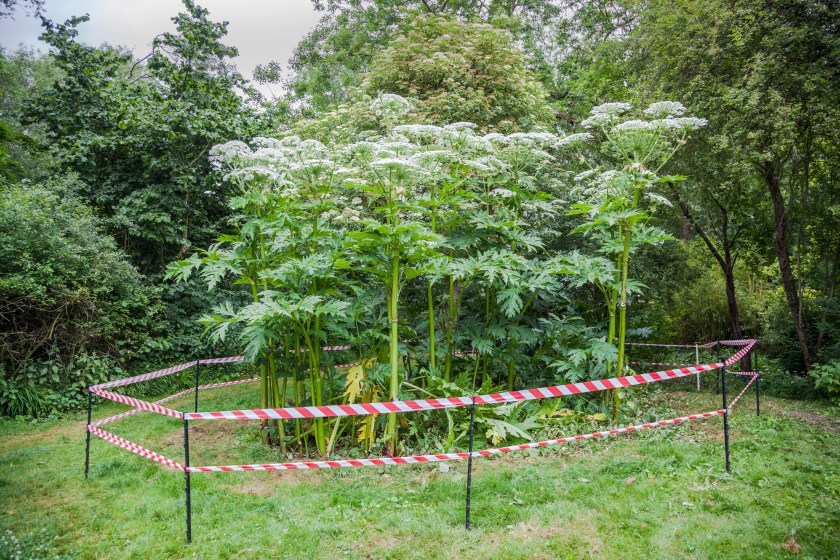
Getty Images, kbwills
Known as Heracleum mantegazzianum in the scientific world, giant hogweed is actually native to Central Asia. But it's since spread around the world, including North America, where it is often mixed up with the more common cow parsnip.
Giant hogweed is one plant you really don't want to mess with, thanks to a phototoxic chemical compound in all parts of the plant called furocoumarin. If you get this chemical on your skin and it is exposed to light, it'll cause severe burning and blisters. The burning sensation is said to last an incredibly unpleasant 48 hours. Even after the burning is over, exposure to giant hogweed can cause permanent scarring.
There are rumors that if you get it in your eyes, it can cause blindness. (We're not going to put that theory to the test.)
Unbelievably, this plant was cultivated by botanists for years, which is how it first spread to Europe and eventually North America. Now, the toxic plant is usually listed as a noxious weed in most states and is illegal to transport.
Thankfully, this plant is easy to spot. Its main stem is often characterized by purple and red blotches, and it is topped with huge white flowers. True to its name, giant hogweed can grow over 10 feet tall and nearly 5 feet across. If you find one, it might be best to report it to your state's wildlife department.
8. The Manchineel Tree
Hippomane mancinella, aka the manchineel tree, is one toxic plant you never want to encounter, as it can kill you in more ways than one. Even Christopher Columbus feared it enough to call it "manzanilla de la muerte," or "little apple of death."
Just about everything on this tree is deadly. The fruit, despite looking and tasting like an apple, causes gastroenteritis and internal bleeding, and can cause your throat to close up.
But wait, that's not all. It's milky-white sap contains a natural organic compound known as phorbol, which causes painful blistering and burning of the skin. And it doesn't take much. Even standing under a manchineel during a rainstorm is bad—the rain can wash the sap off the tree and onto your skin, like the acidic blood of the xenomorph creatures in the "Alien" movies. Yikes.
Fortunately for North American residents, Hippomane mancinella is only found in Florida, and it's exceedingly rare to the point of being actually listed as an endangered species. In most places, these trees are marked with a red X or other warning signs to clue people in to the fact that the innocent-looking plant standing nearby is actually the most dangerous tree in the world.
READ MORE: Here's the World's Most Dangerous...Tree?
